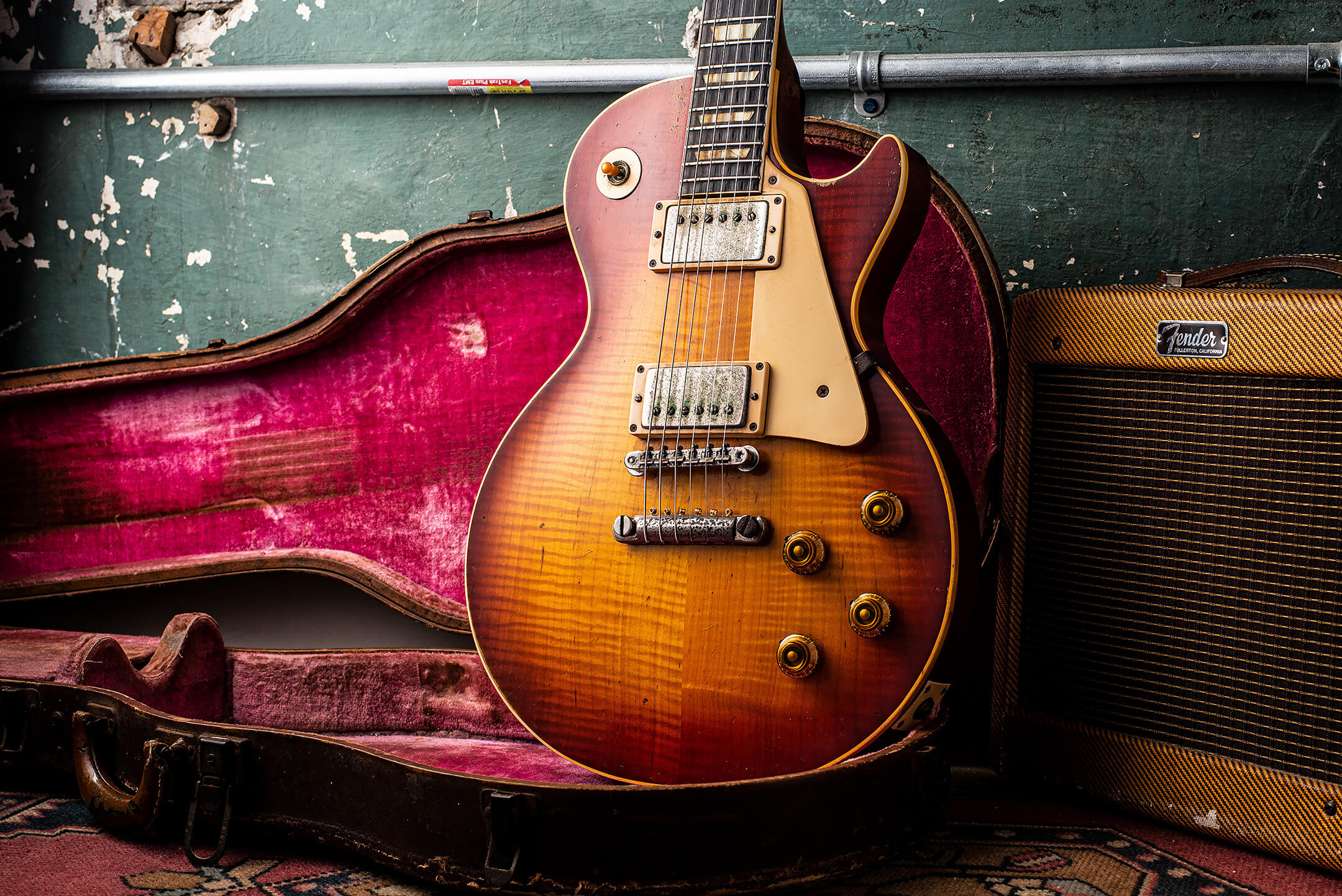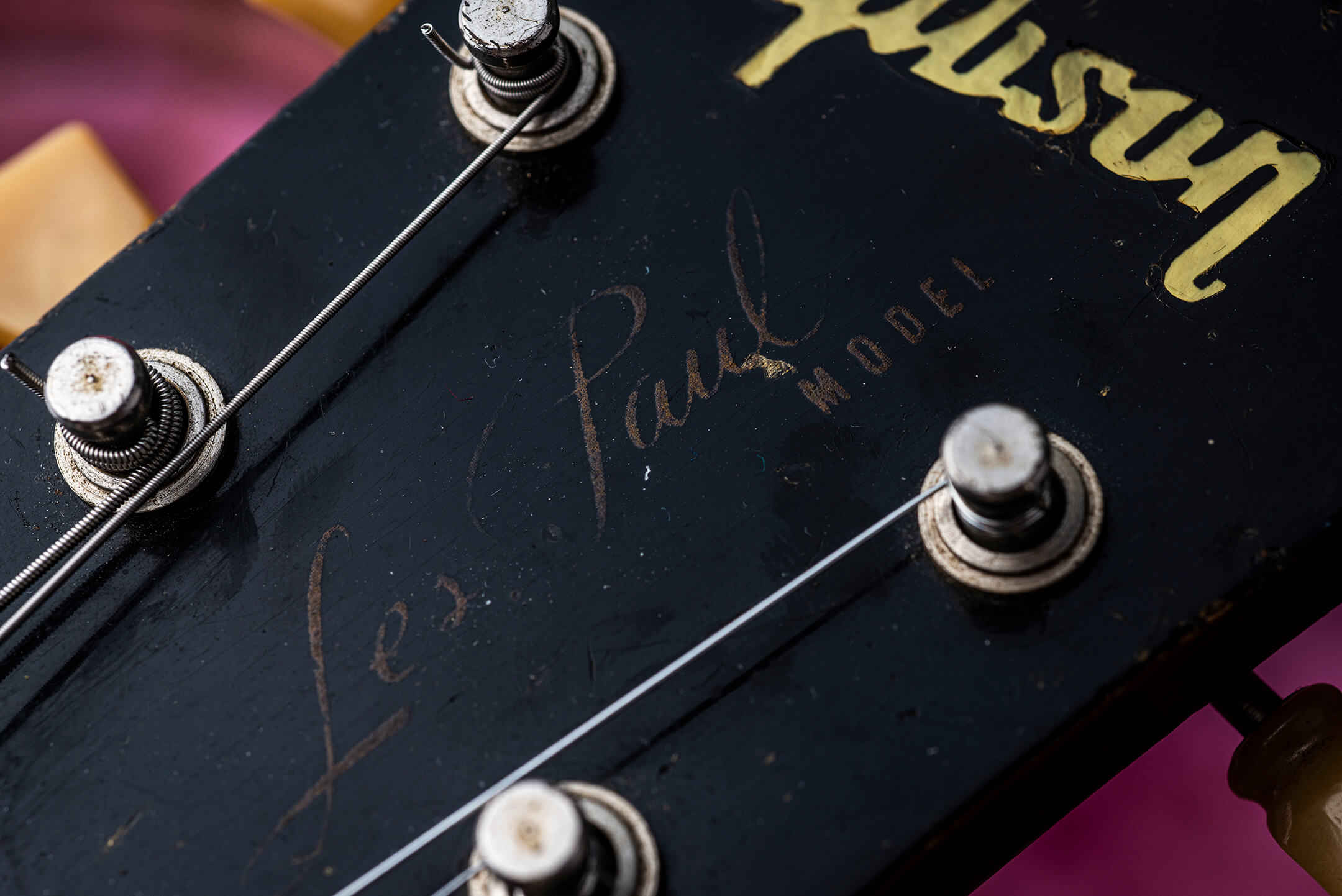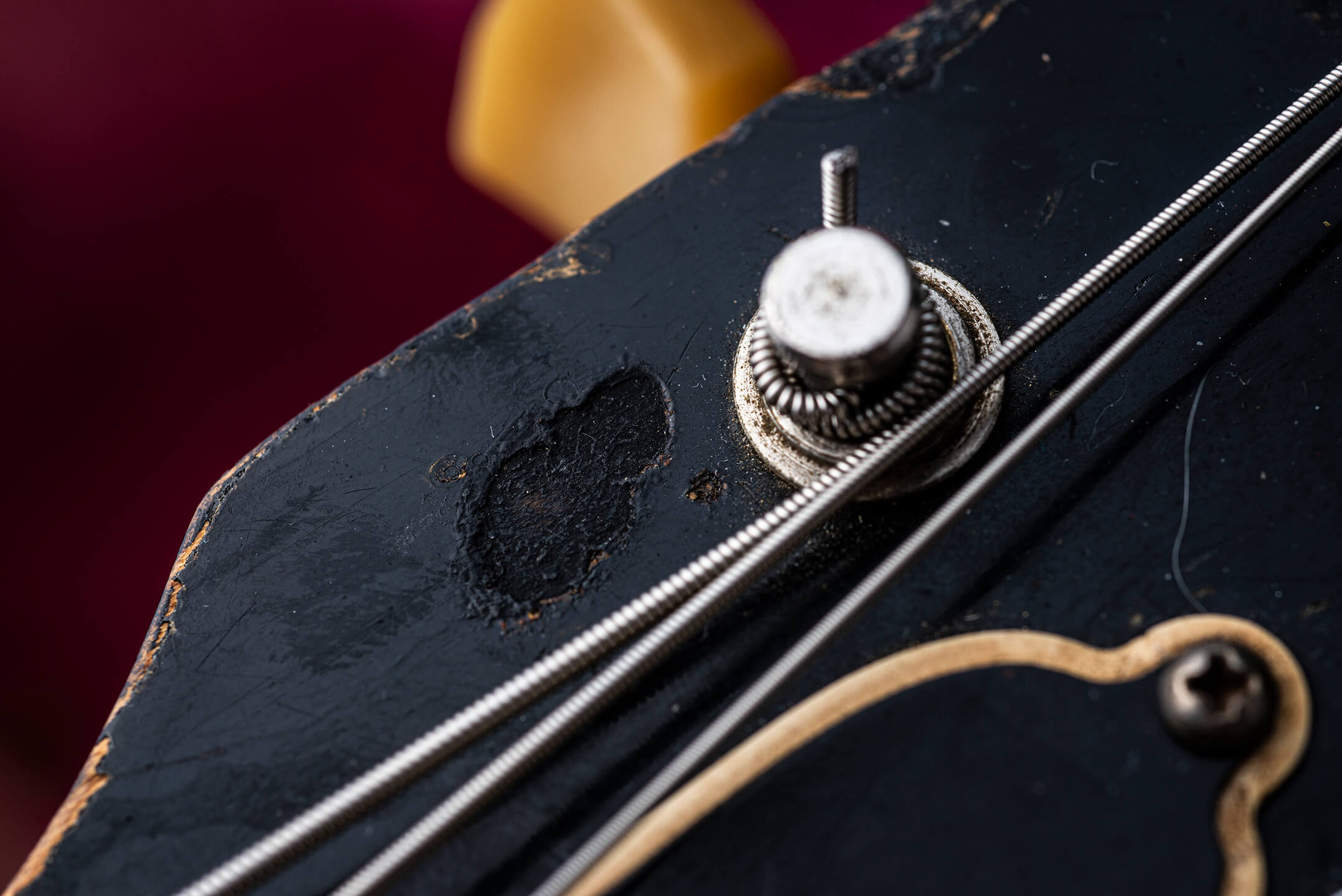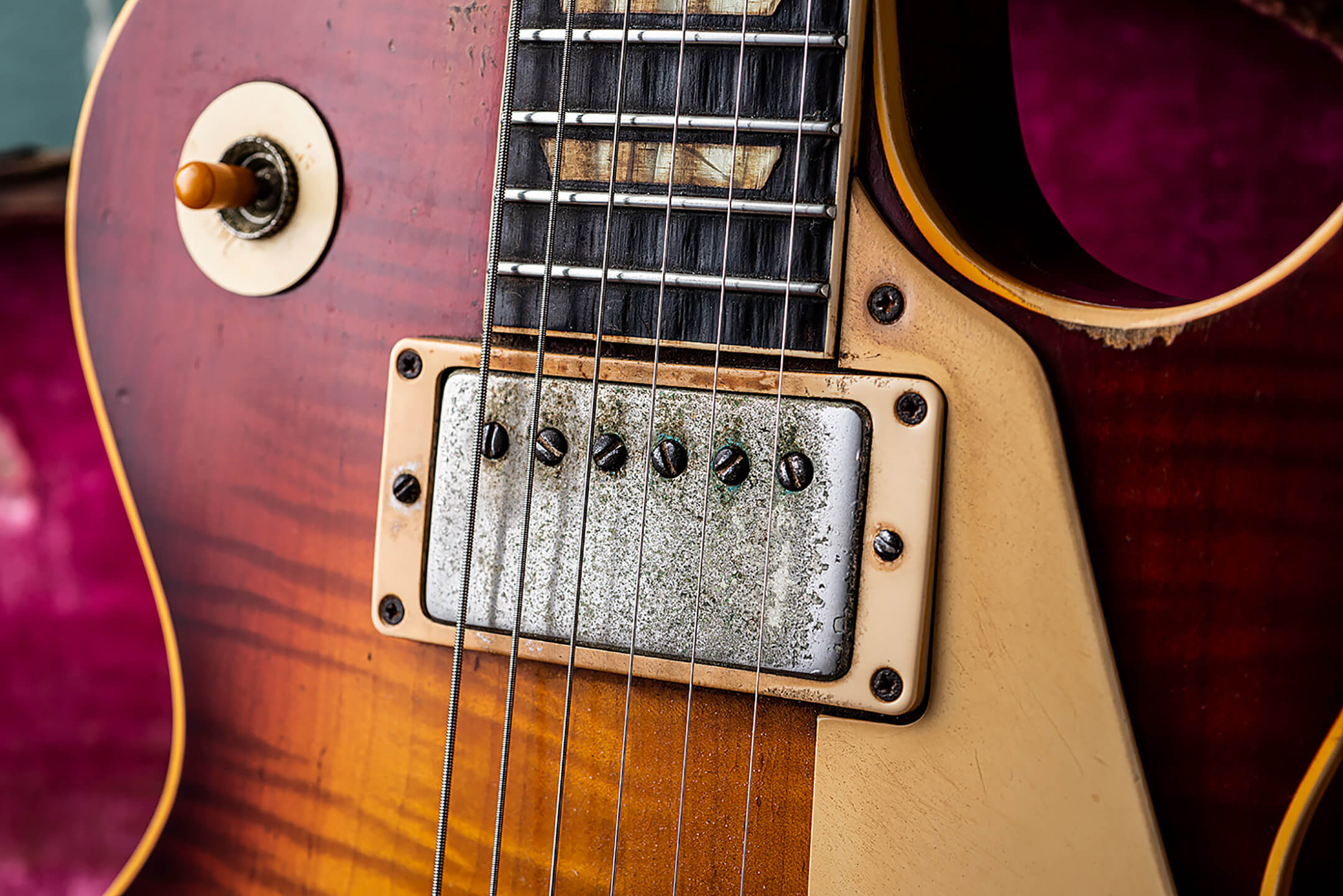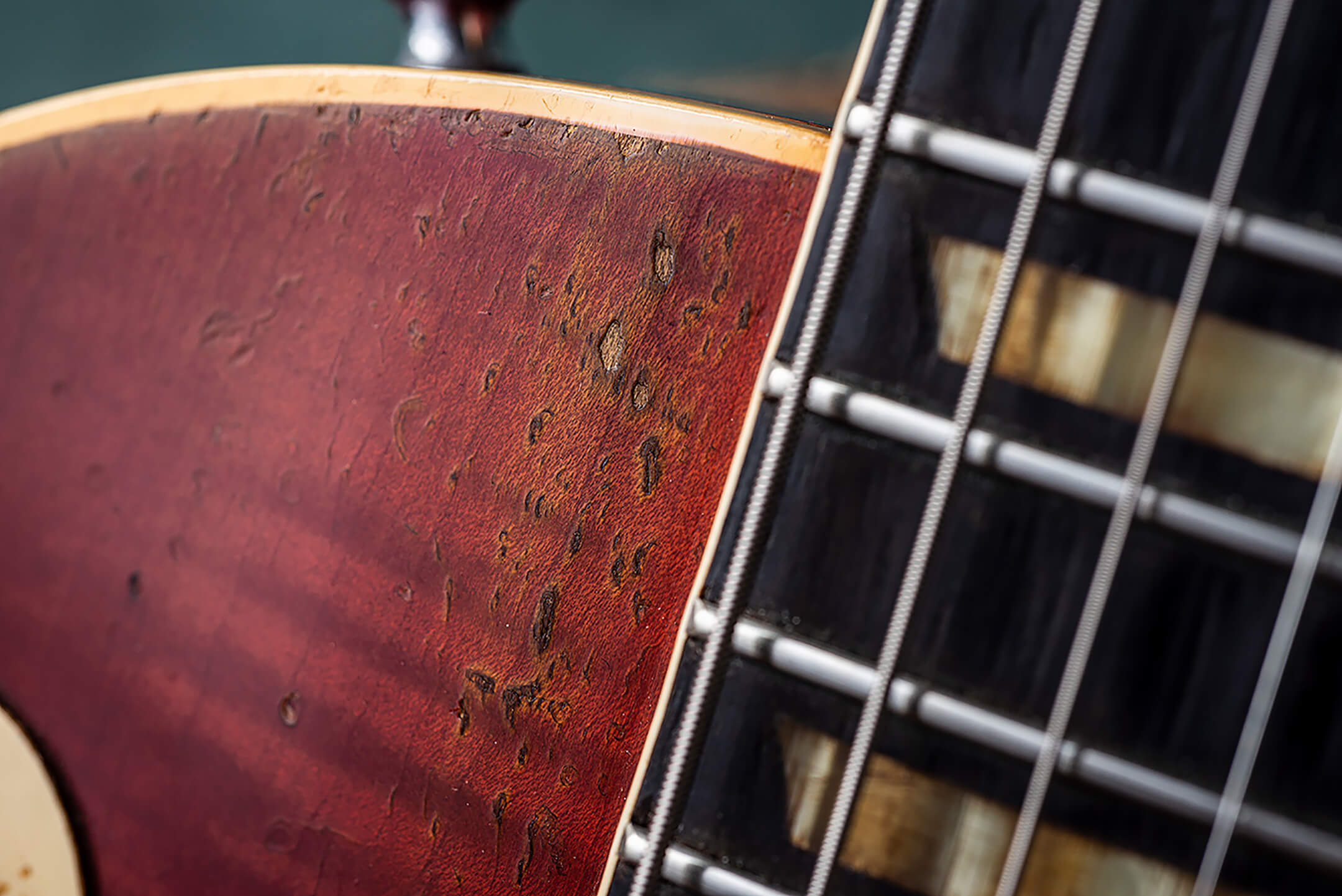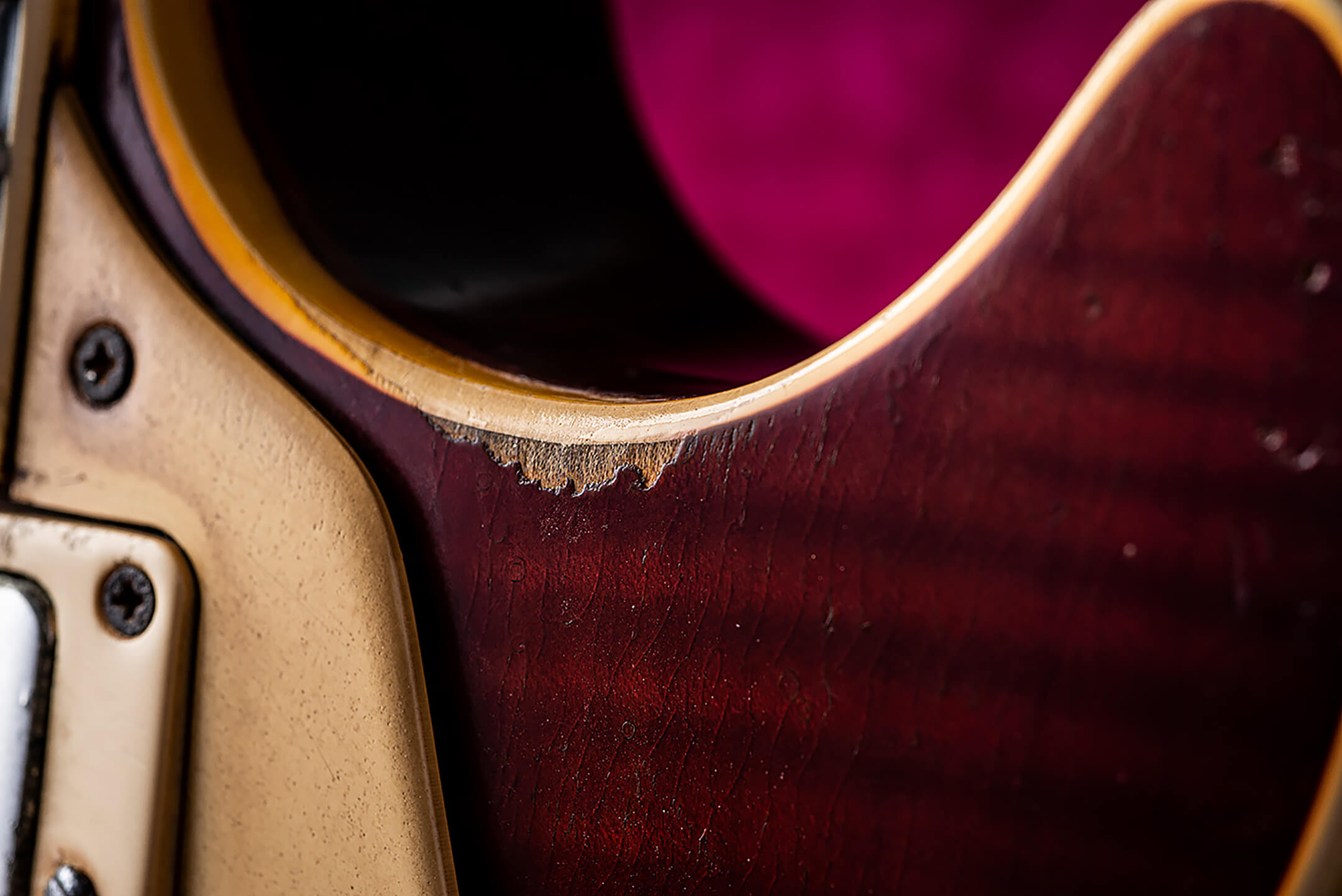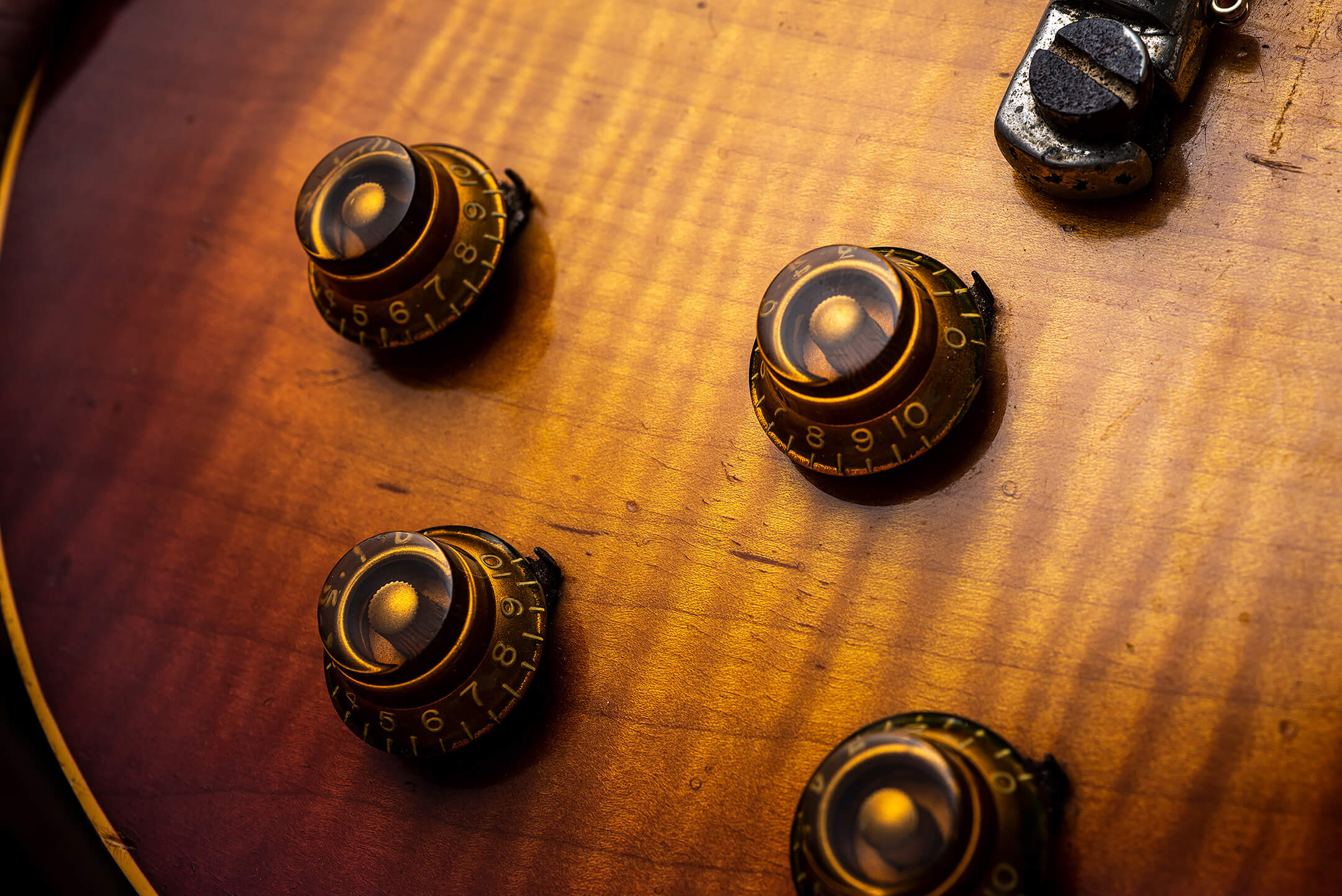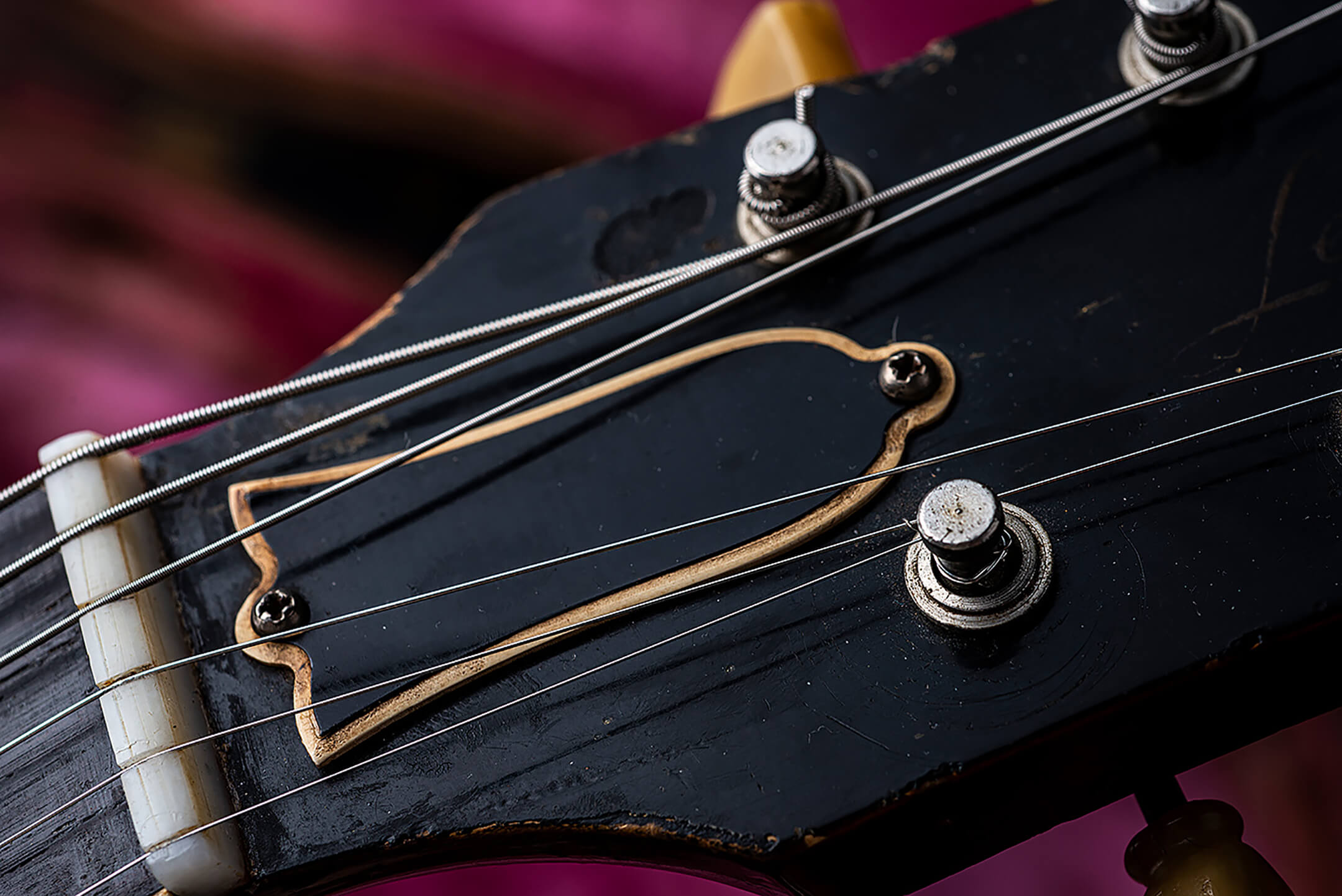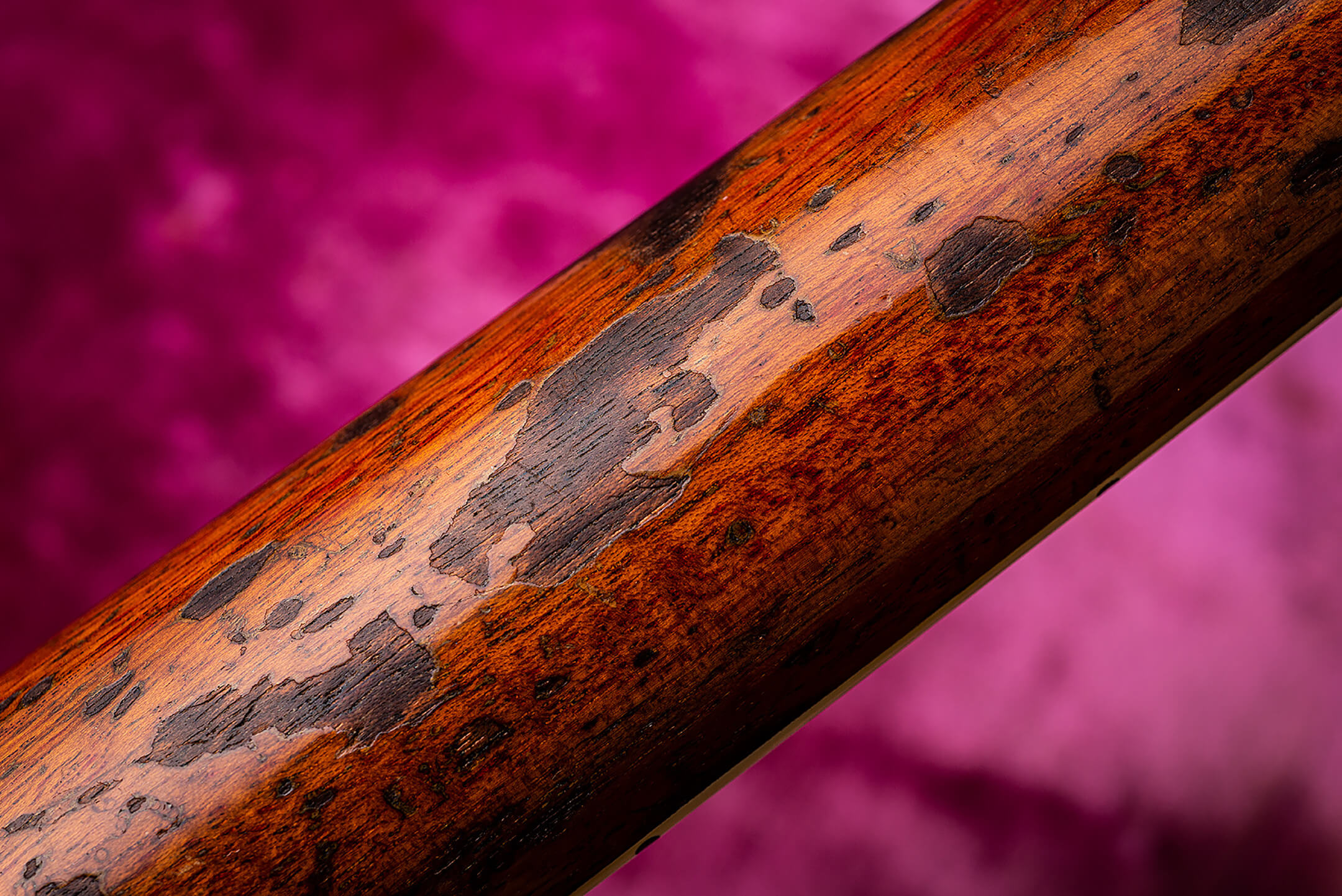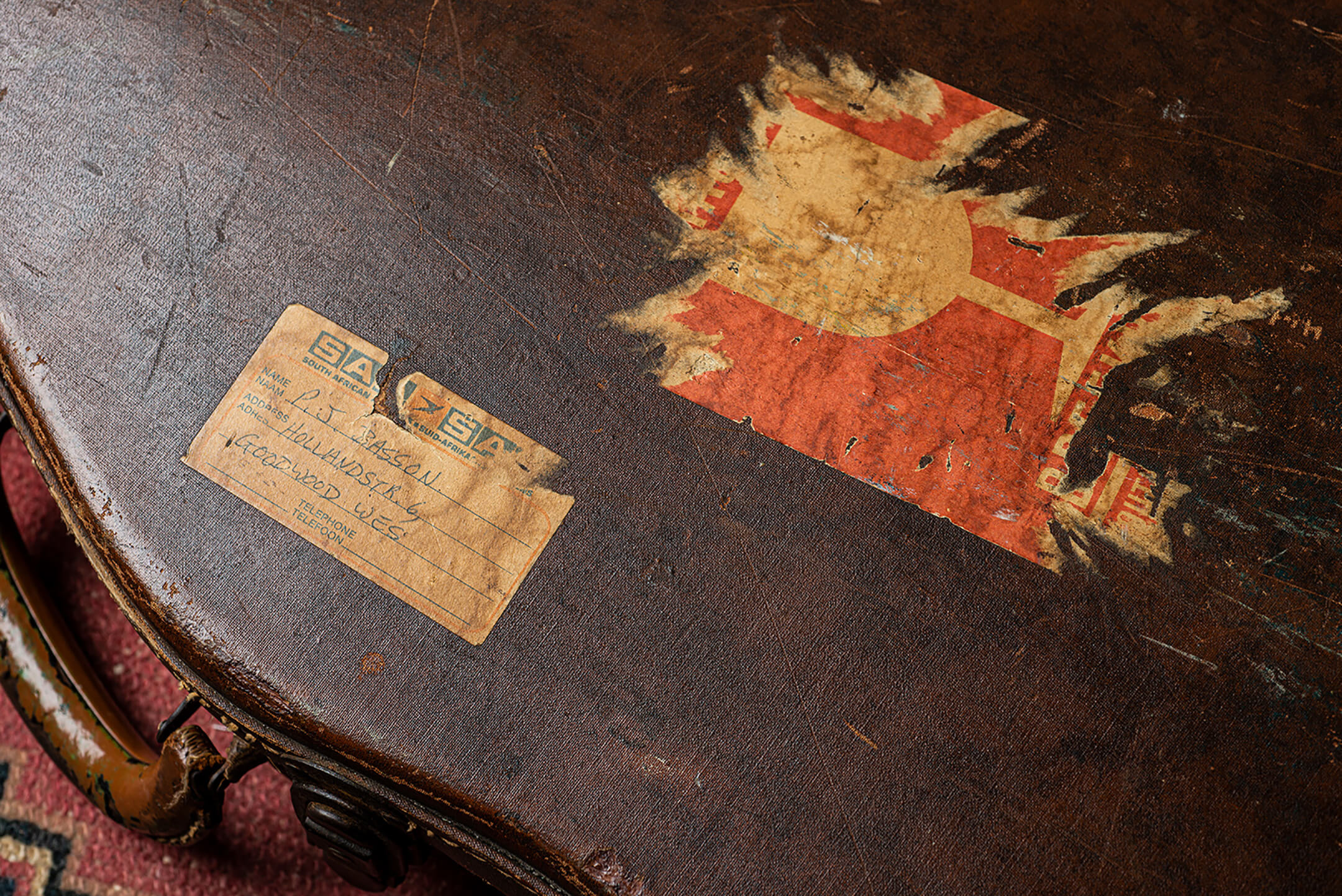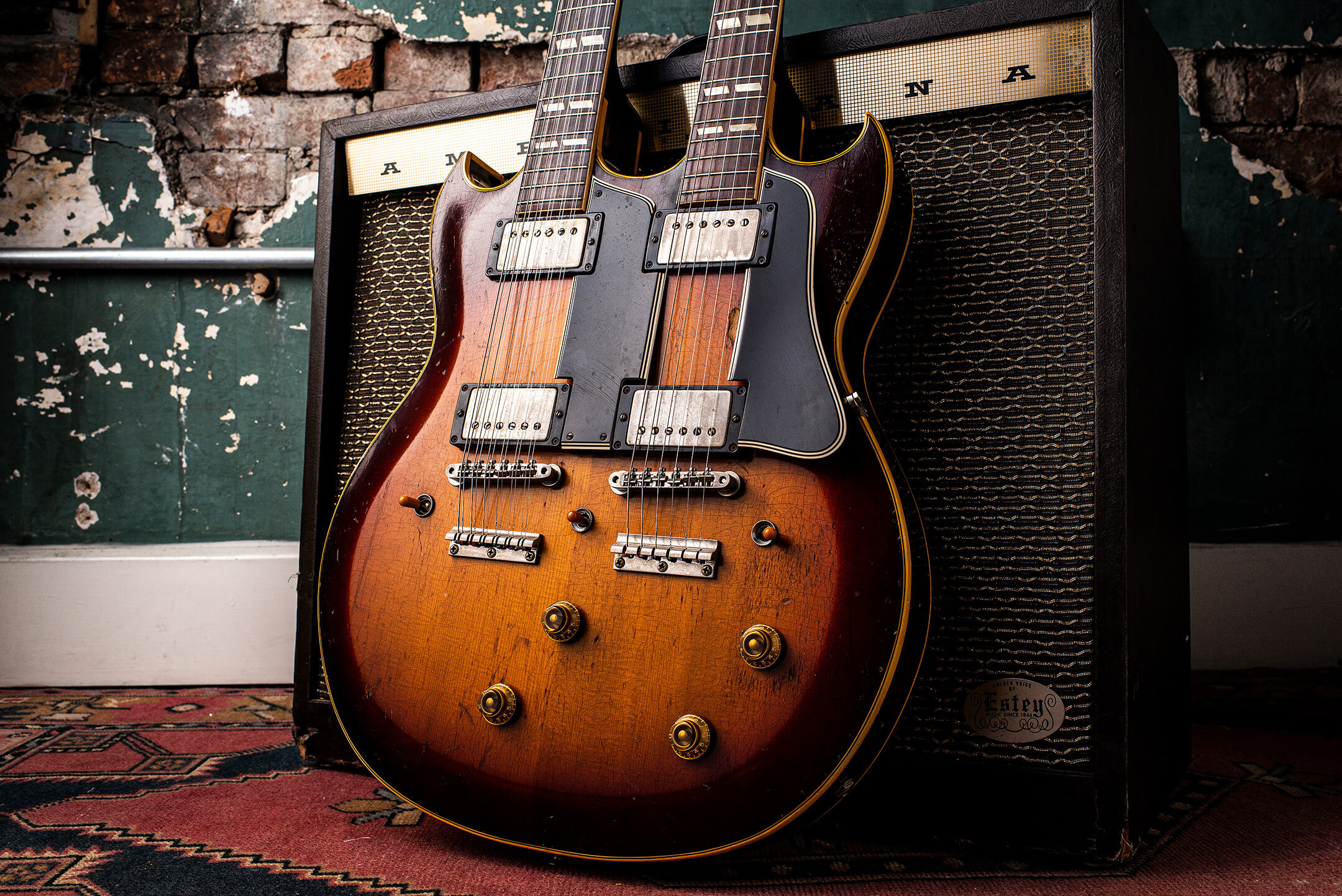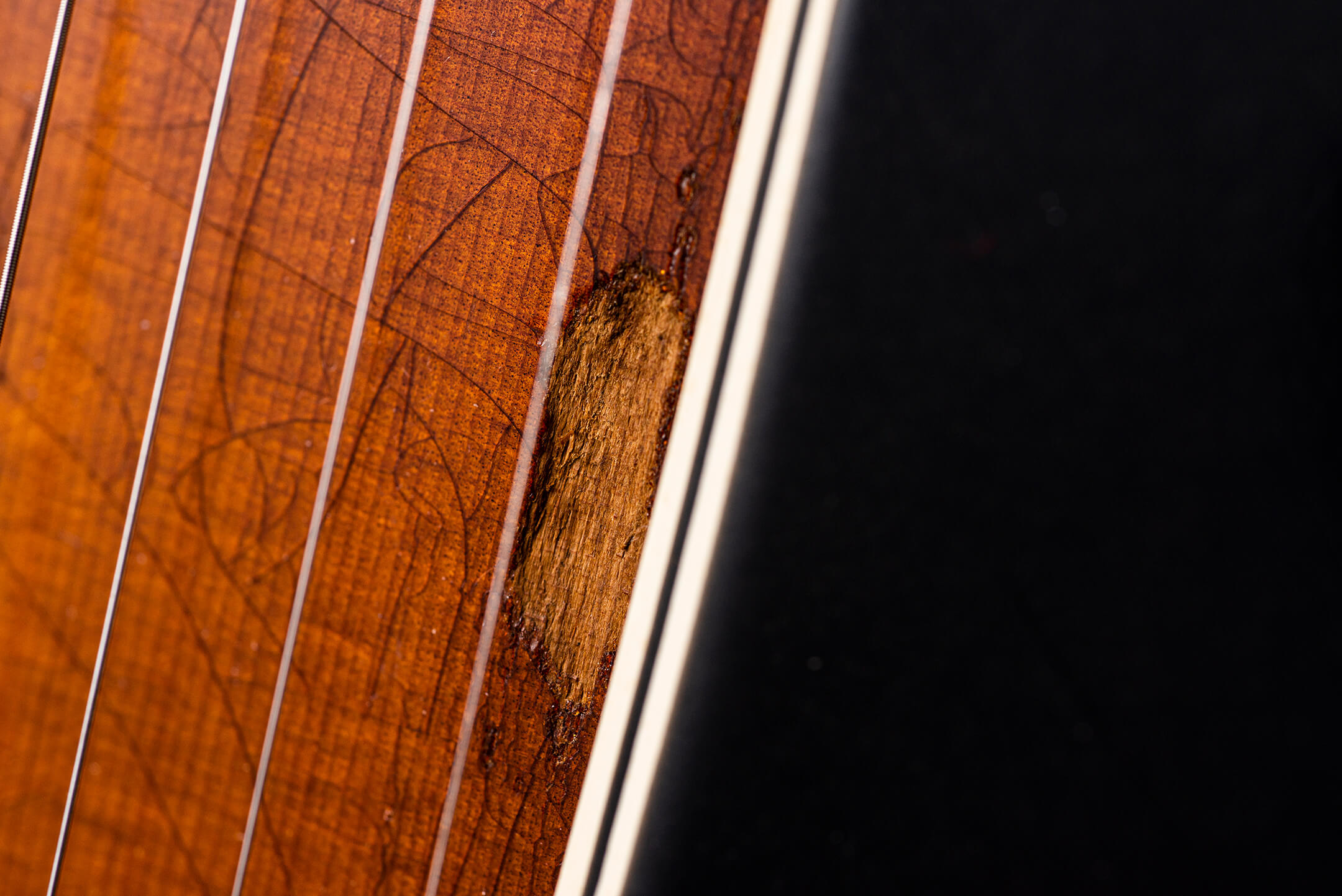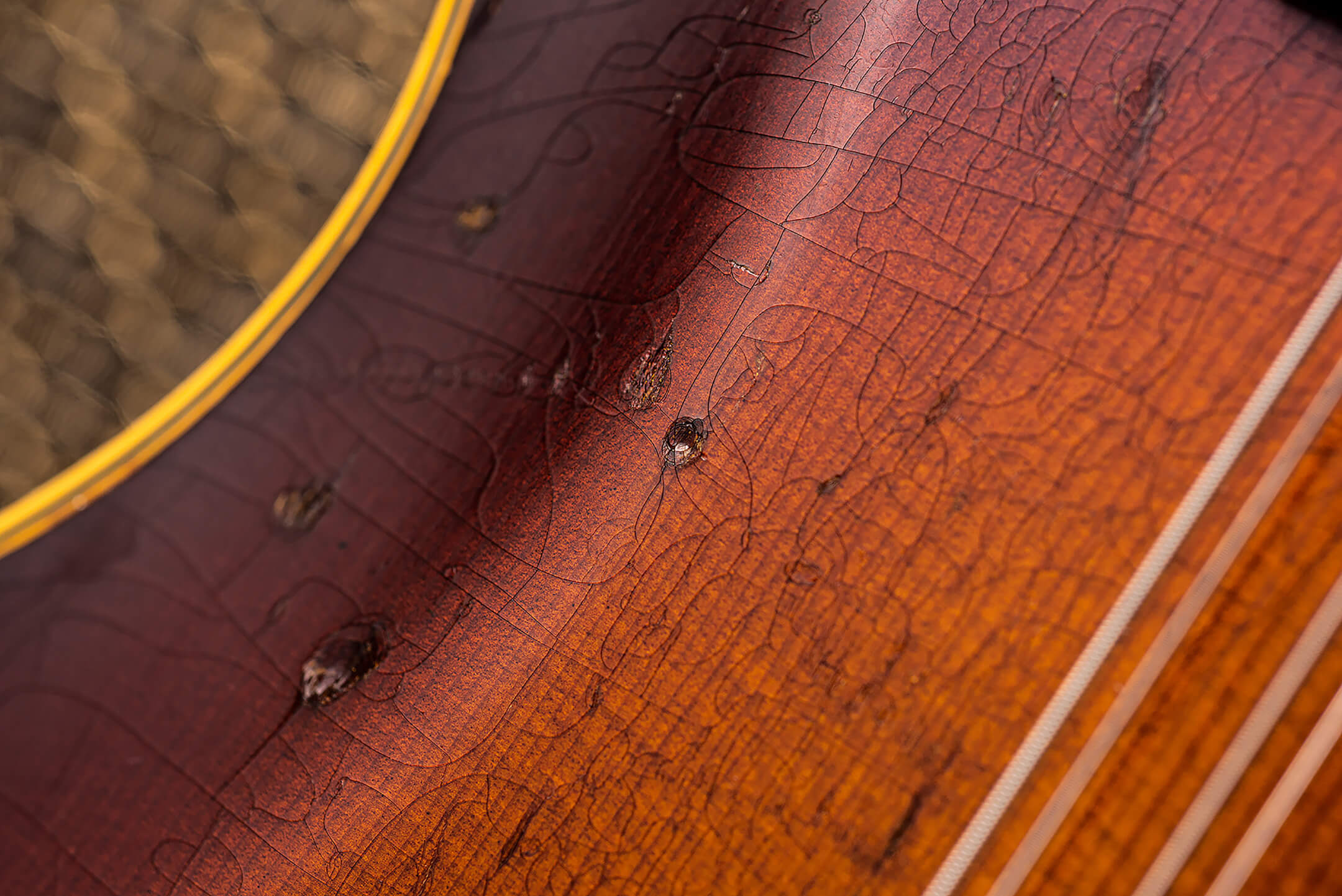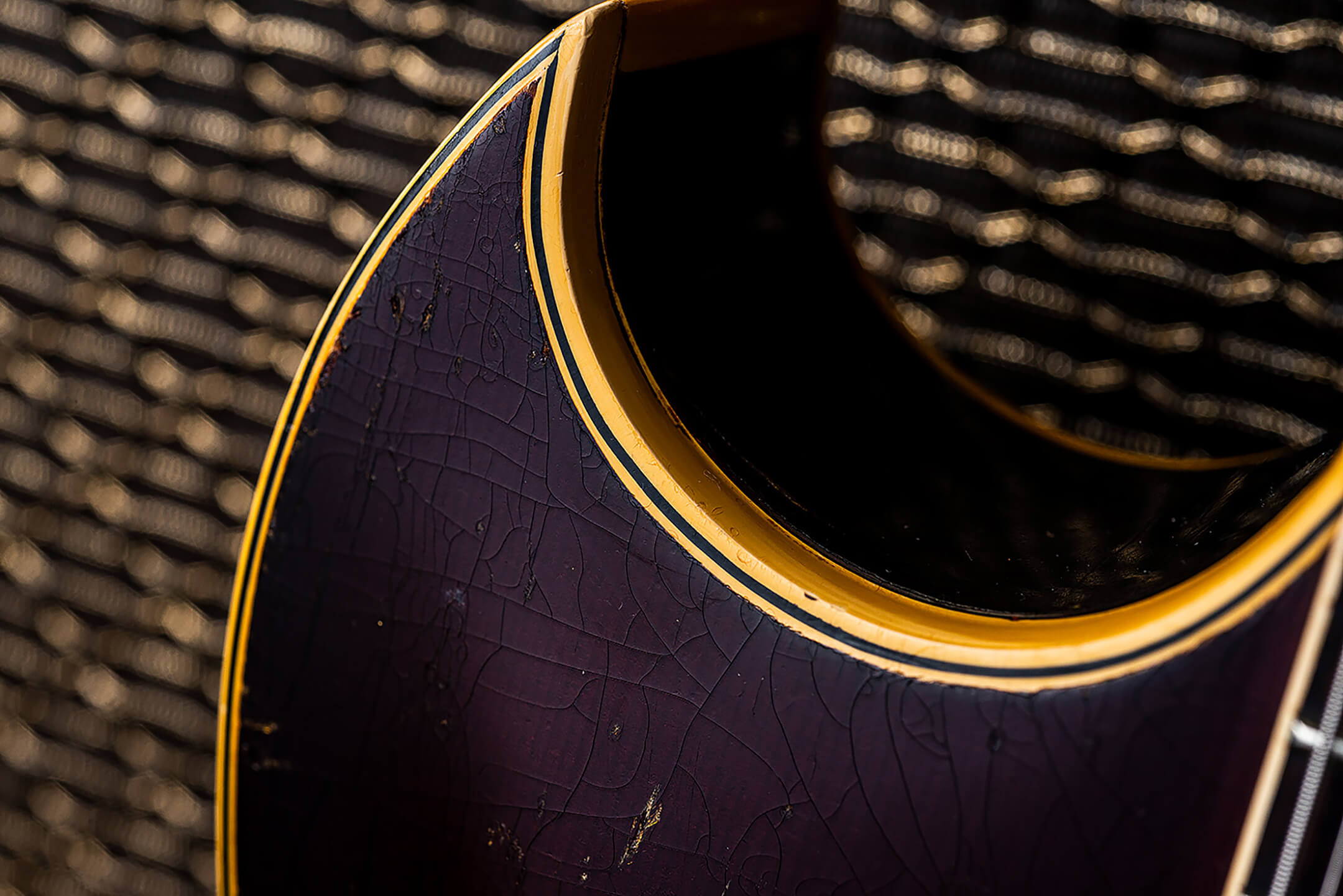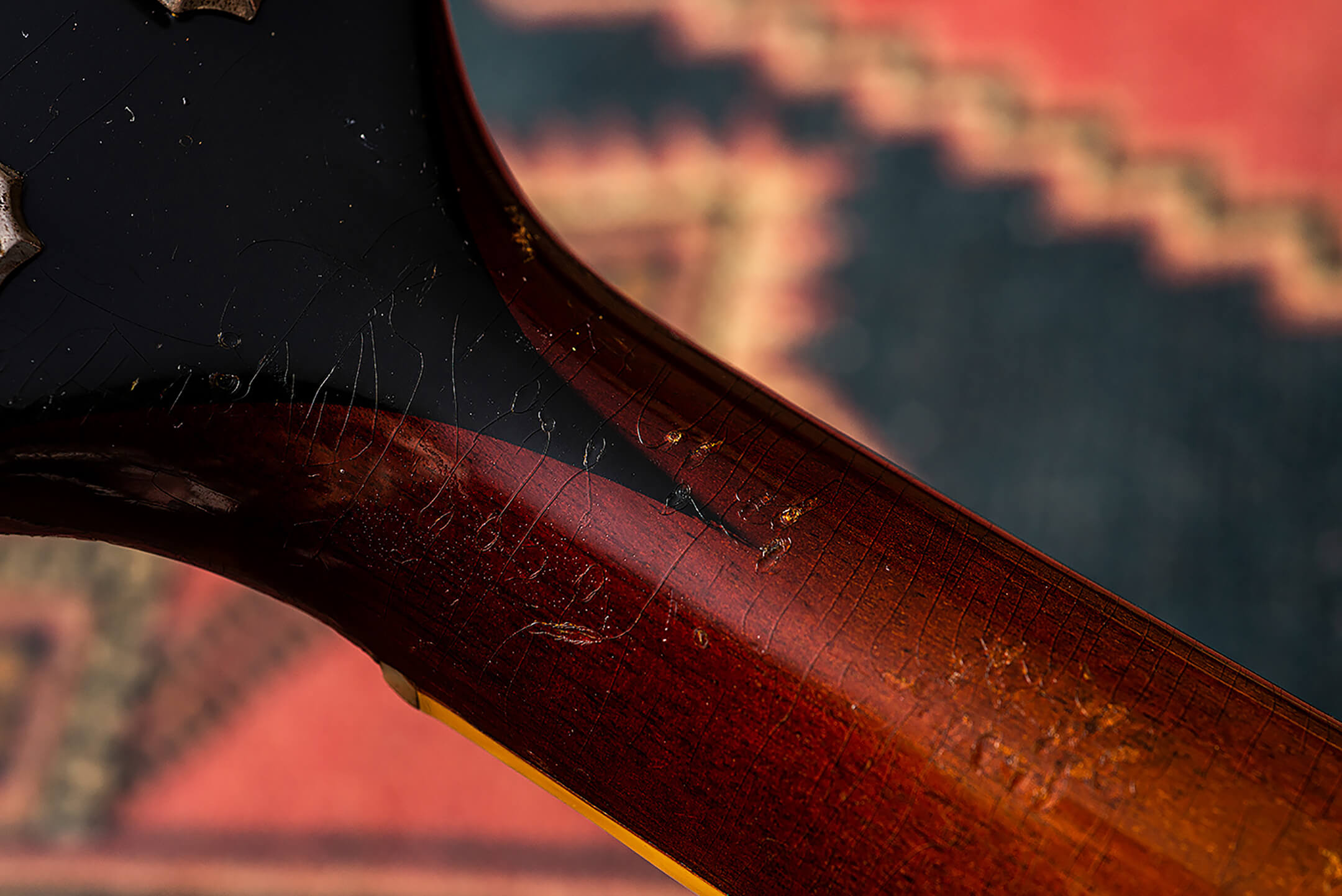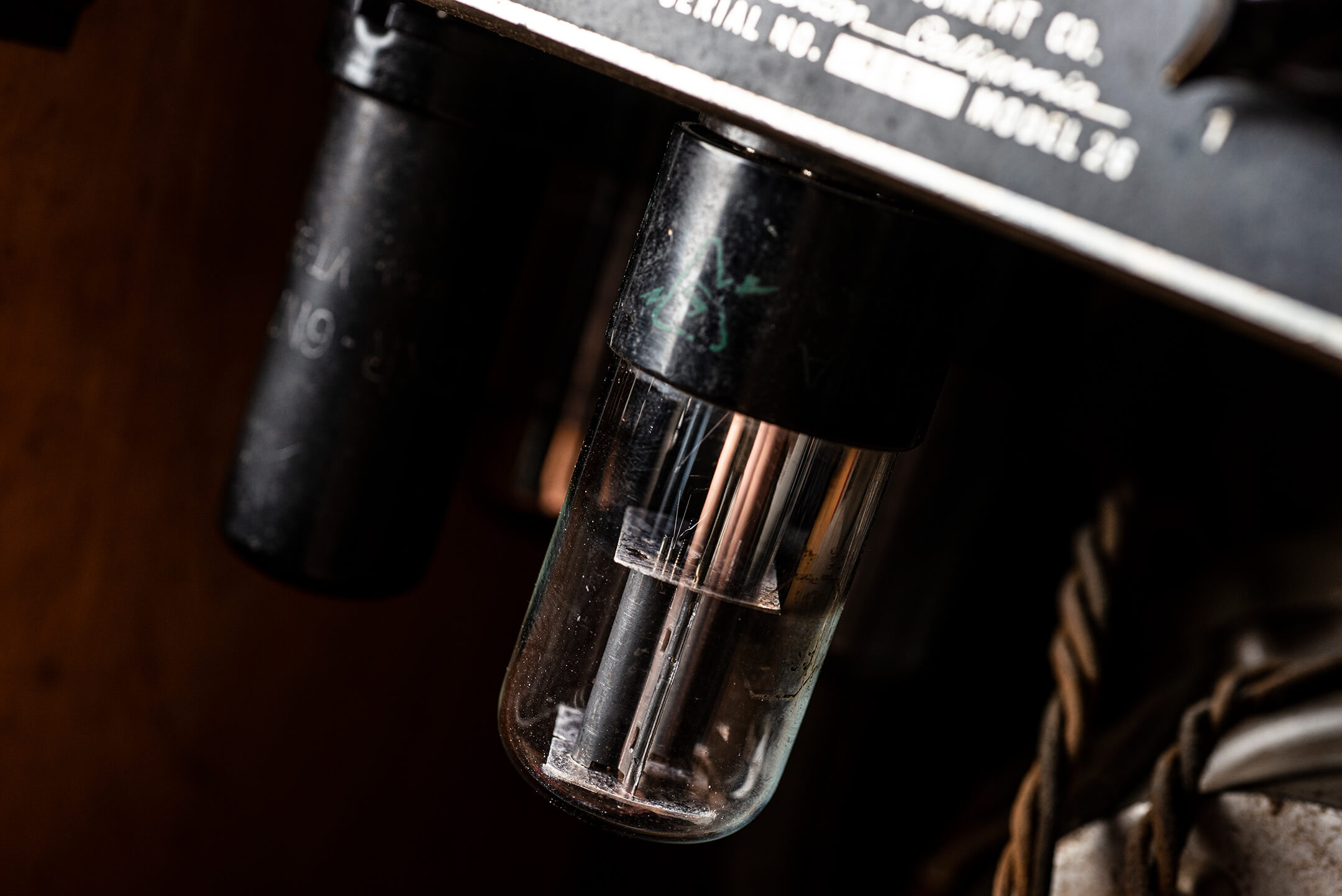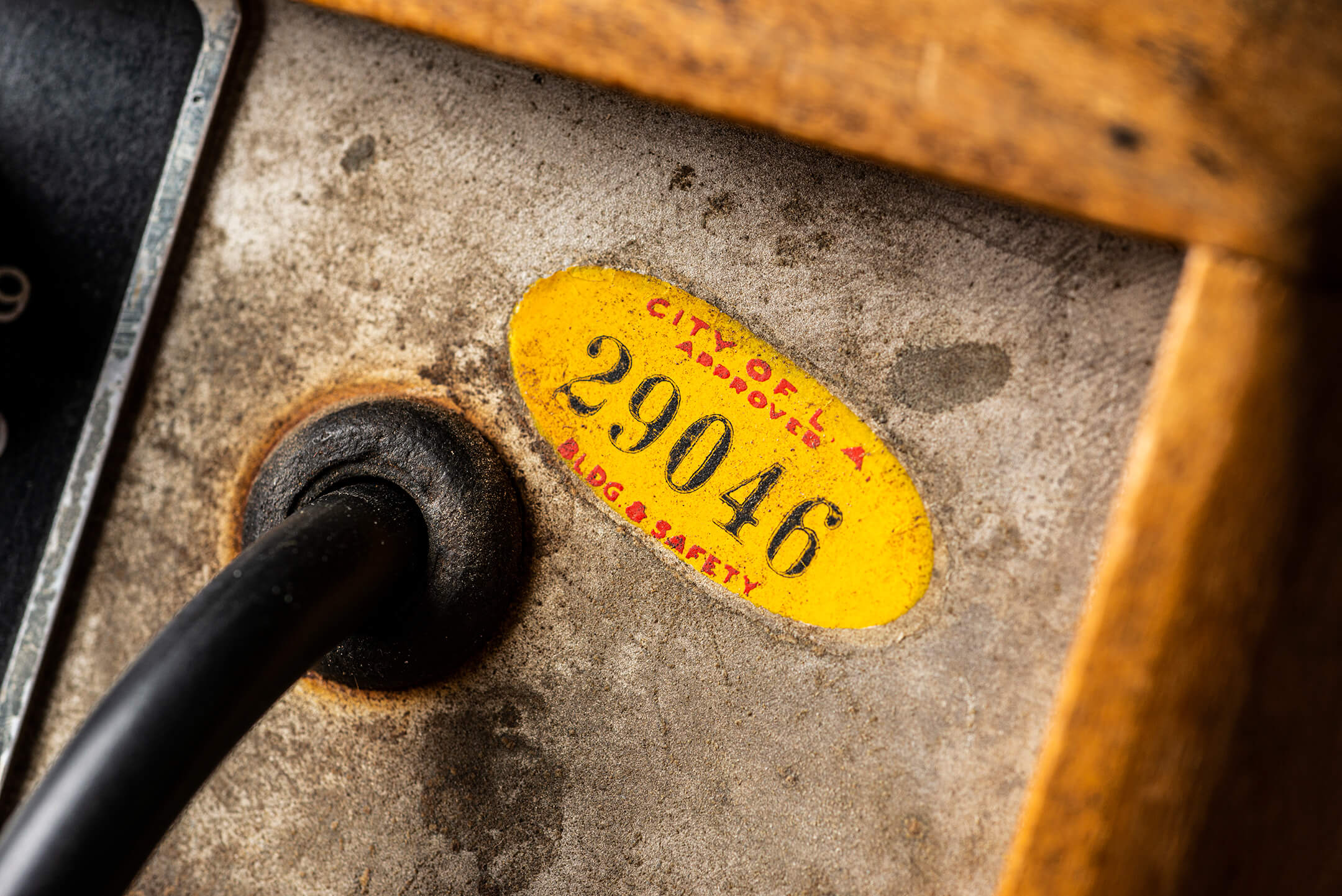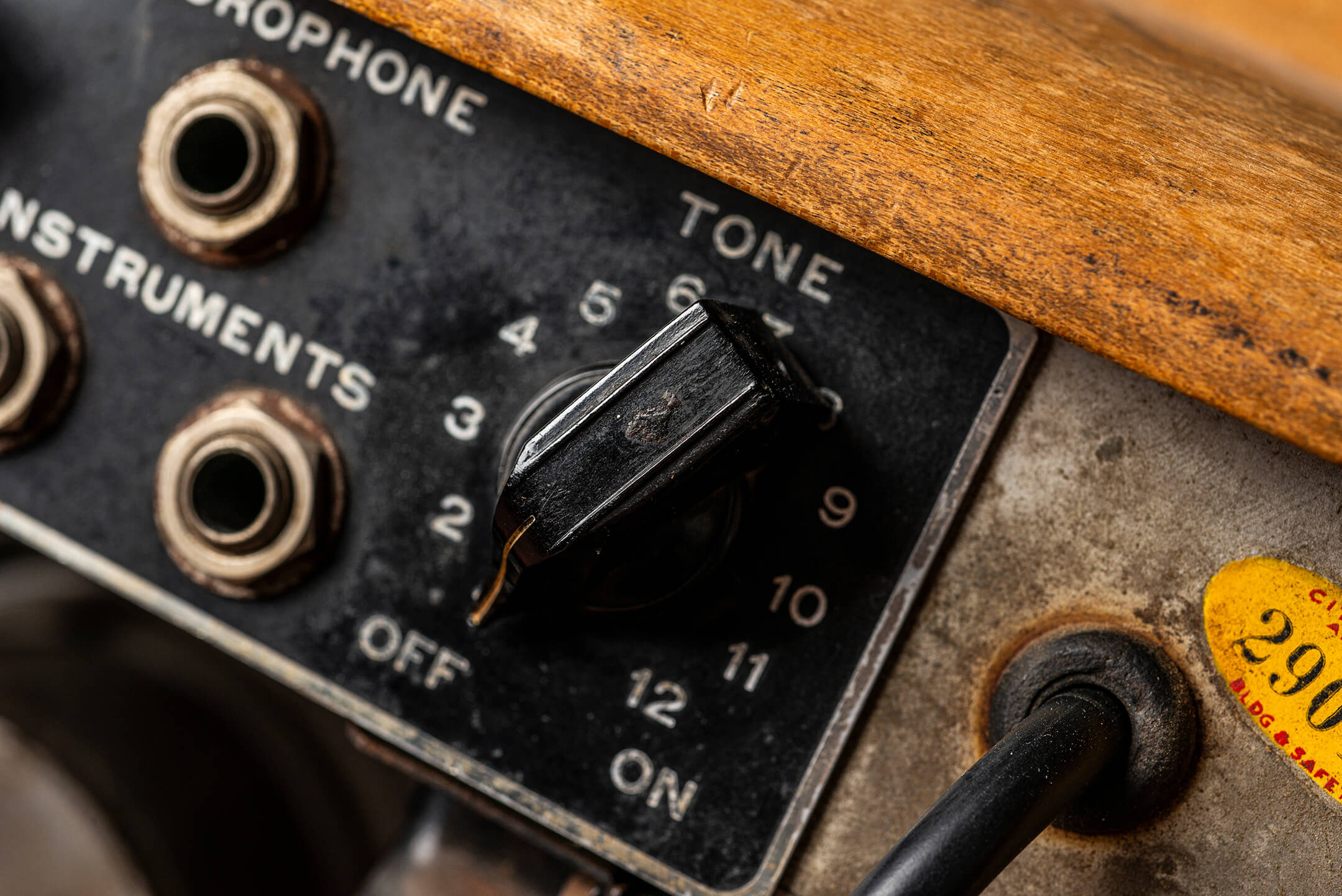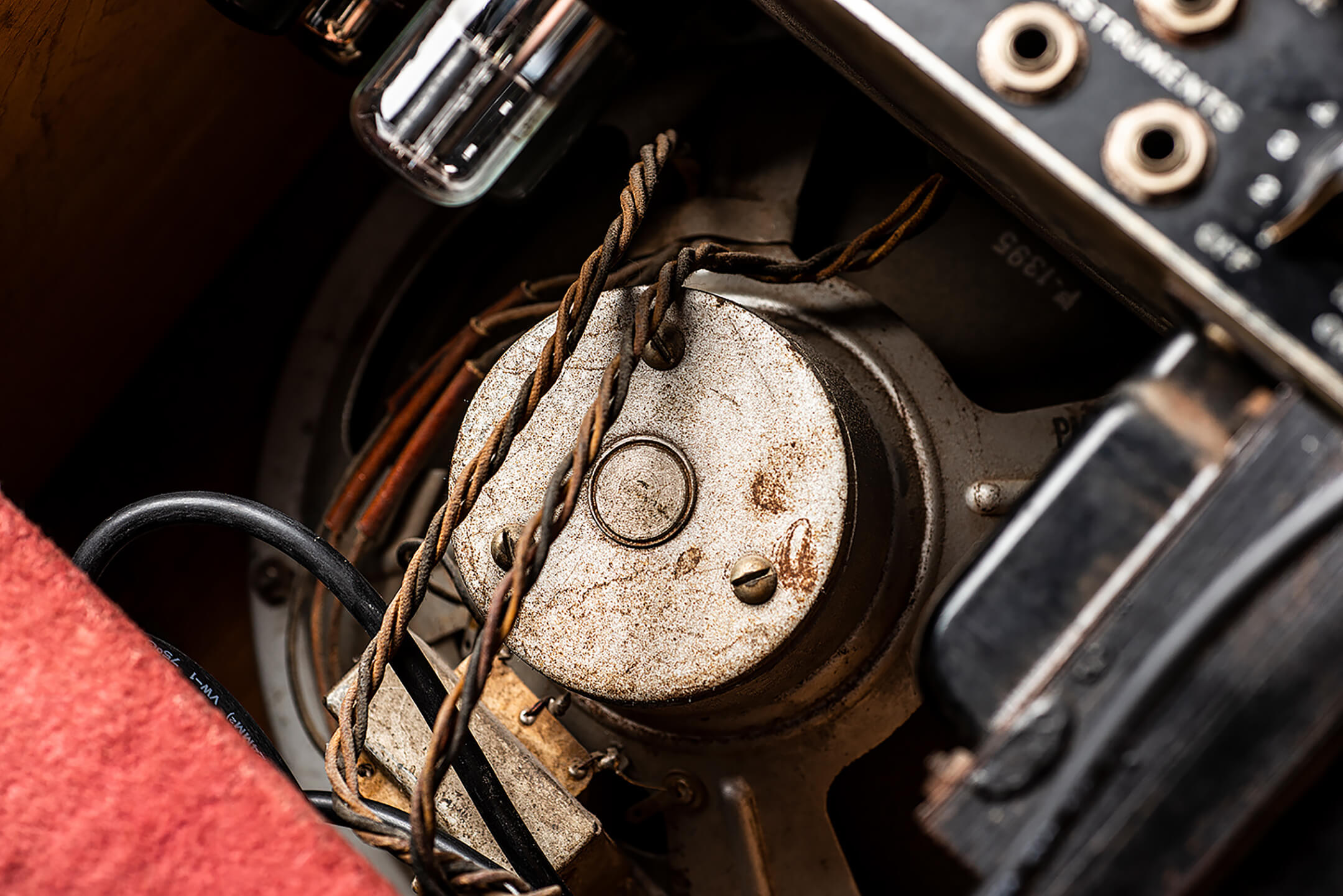Related Tags
The Thrill Of The Chase: True Vintage Guitar’s John Shults
Some long-established vintage guitar dealers have never had a Burst on their books. Despite being just 32 years of age, John Shults of True Vintage Guitar has already sold two. We catch up with him in Tennessee to hear his story.

All images: Eleanor Jane
- READ MORE: The Guitar Interview with Joe Bonamassa
We meet with John Shults of True Vintage Guitar in Nashville as the heavy summer air turns stormy. In addition to sharing some entertaining tales of his many guitar safaris, he shows up with a small but devastating array of gear for our perusal, including a first-year Stratocaster, one of the cleanest ’53 Goldtops you are ever likely to see, a 1959 Gibson EDS-1275, an Americana-branded 1963 Magnatone 262B Custom and a 1946 Fender Model 26 Deluxe. There’s also the pièce de résistance: the 1958 Les Paul Standard that John flew to Cape Town to obtain back in March, which now resides with Joe Bonamassa.
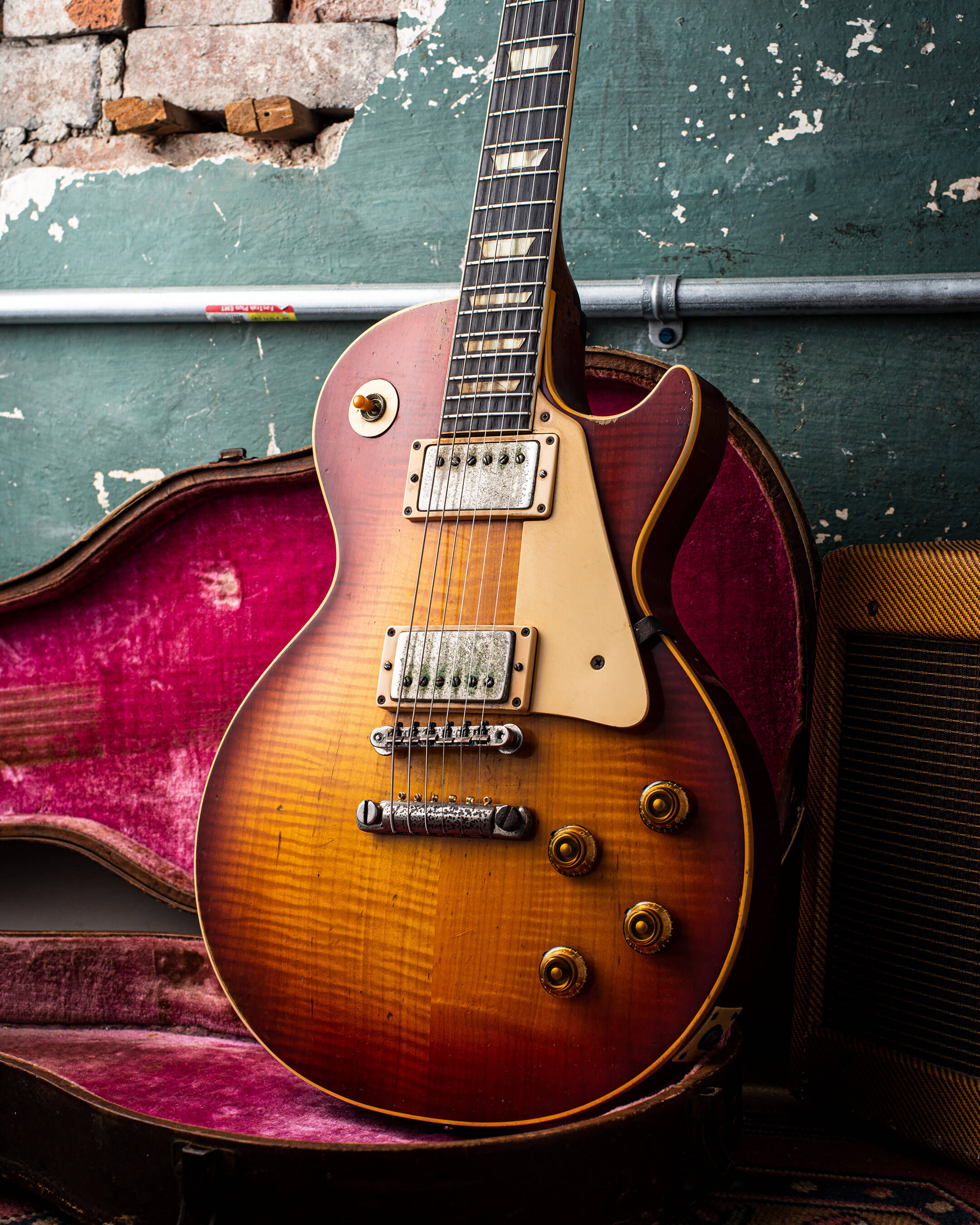
Nicknamed PJ because of the name handwritten on a label on its case, the ’58 Burst is hand-delivered for our shoot by Bonamassa himself. Joe is effusive in his praise of John’s operation, acknowledging that the 32-year-old is “on a roll” in terms of the streak of rare instruments he has unearthed. The rise of True Vintage Guitar has certainly been meteoric, but we’re curious to know what pulled John into the business in the first place.
“It kind of felt like gravity,” he says. “As far back as I can remember, I always loved old things and always loved guitars. But I didn’t really have musicians in my family – nobody was really interested in music like I was. I had a guitar and did my best with it but I remember hearing about vintage guitars and thinking I would never be able to experience that.”
That would all change, however, when a guitar-hunting project during his sophomore year studying business at the University Of Alabama yielded a 1972 Martin D-28. “My friend wanted a good acoustic and I was like, ‘This is a great acoustic.’ He was like, ‘I don’t want an old guitar’. Who has ever said that in their life? It blew my mind. In my world, everyone wanted an old guitar! That was the unobtainium everyone wanted.”
John spent some of the money he’d earned from his part-time job on that guitar, and one guitar deal led to another – and then another. “I loved that guitar but thought I was more of a Gibson guy than a Martin guy, so I sold the D-28 and made some money on it and thought, ‘Woah, this is the most intoxicating bit of money making I’ve ever done’. I’d never really thought of it as something you could make a career out of, but I just started buying and selling and followed whatever was piquing my interest at the time. Tweed Fender amplifiers and Gibson flat-tops, for the most part.”

After graduating and getting married, John tried unsuccessfully to get a job at Gibson in Nashville. Though he was still buying and selling guitars, things had begun to slow down. However, a conversation with his entrepreneur father proved pivotal: “My dad was like, ‘You can’t slow down. You have to keep doing that’.”
After two and a half years of selling guitars in his spare time and paying the bills by working at his father’s company, next it was John’s wife Liz who provided the support and encouragement required to make guitar-trading his full-time occupation. In February 2014, they went all-in.
“Other than a downpayment on our home in 2016, we reinvested everything,” John explains. “The awesome super-cheap find at a yard sale… as a dealer, you can’t be at every yard sale. You have to have a pool of money and be willing to spend more than the next person. It seems risky, and if you aren’t passionate about guitars it very much is. But if you are, and you find yourself looking at guitars online all the time, you just gather that knowledge in your own time because you love it. I only buy and sell guitars that I personally am passionate about. I’m just a low-volume shop, I don’t do strings, or capos, or straps or anything like that. I only do vintage stuff.”

One of the things that sets True Vintage Guitar apart on social media is how John documents the many road miles he puts in. You might see a guitar pictured in some far-flung location or even a deal going down in a Walmart parking lot. “I’m embarrassed to say this but I’ve definitely followed what the Instagram algorithm wants,” he admits. “A still picture of my guitars, the best I can do, is good. And people like to see that. But just a quick cellphone shot of me on the side of the road with a crazy vintage guitar and a location that’s not where they normally see me is far more effective, and also tonnes of fun.”
It might be tiring, but when chasing killer vintage guitars, there’s no substitute for the hard yards. “These things happen so quickly,” says John. “If someone decides to sell, it’s likely they’ve been talking to two or three other people. I’ve gotta be the first guy there – you’ve just gotta get in the car. For the longest time I drove this 2005 Ford Crown Victoria. It’s the perfect road trip car but it is not cool. But it was so cheap and just rock solid. But that was one of the things that meant I was able to close these guitar deals. It was just like, ‘Yeah, I’m on my way. West Texas? Okay, I’ll be there in 12 hours’.”
On arrival, are there any strategies that John employs to help the deal go smoothly? “It’s really easy to get so focused on whether you are getting a good deal that you end up with a serious face, and no-one’s having fun!” he cautions. “We’re buying a cool guitar, this person’s being paid a lot of money… this is fun. So the first thing I should do is play it and enjoy it, instead of opening up the case and going, ‘Is this original? Is this neck warped, or is there a headstock repair?’


Dead end
On a roll he may be, but there have also been occasions when John’s many hours at the wheel have been wasted. “I showed up to buy a 1957 Stratocaster and the gentleman who owned it had bought it used in the late 60s,” he recalls. “It wasn’t collectible then, it was just an old guitar – and he played it and loved it but he wasn’t a lifelong musician, he’d just never sold it.
“He was an older guy, and wasn’t really familiar with technology so the pictures he sent me were terrible. But I just jumped in the car because I was like, ‘57 Strat! We’ll work it out when I get there!’ And I show up and it has this big crack – it had taken some kind of really big knock. And it looked like some kind of seam separation, which can happen on Fenders when it’s a three-piece alder body and the glue joint fails a little bit, that can happen and it’s not catastrophic. But this one, he’d only sent me pictures front on, so it looked like a seam separation, but when you turned it to the side, it went all the way through the neck joint – the most structurally important part of the guitar.
“He wasn’t trying to trick anybody, he said it had a crack. It had taken a lot of pursuing for him to agree to sell, so then he was so confused when I didn’t want to buy it. But I wasn’t going to tell him one price and then show up and offer half. I’m not gonna do it. So I just turned around and went back home. But that was eight hours’ driving each way.”
We wonder if John ever feels any sense of personal risk walking into these situations alone, in the middle of nowhere, and even if things get a little scary sometimes.
“Absolutely!” he laughs. “I’ve bought a vintage guitar in a trailer park outside of Knoxville at 1am. That was interesting. But I try to do my best to communicate over the phone so I hear their voice. I need to hear them answer questions in a way that makes sense for the story. If I show up to buy your doubleneck and it’s perfect, playable and mint and you don’t know anything about it, that’s a problem. If I show up and it’s covered in gross 1970s finger juice, it plays like junk, you don’t know anything about it and are asking for help with it, that makes sense to me. You inherited it. That’s what they look like when you inherit them – they don’t look perfect, a lot of the time they look terrible!
“The story is so important. The timeline has got to make sense. Usually their timeline is off – they might say they bought it in ’66 but it didn’t exist until ’71 – but that’s close enough. After that much time, with original owners, the timeline often gets confused. But if I show up and the guitar is super-clean and perfectly set-up, I don’t like that. I’m probably walking on that guitar because that’s a guitar that’s currently being played. And then if the person’s trying to tell me they don’t know what it is, those things conflict.”

Air miles
Not long after our meeting, John lands his second Burst of the year in the shape of a 1960 Les Paul Standard purchased from its original owner, a woman from rural Illinois who had played it with her band in the early 1960s before putting it aside when life got in the way. For John, Illinois was at least a little closer to home than the ’58 he located in Cape Town.
“That one didn’t follow the rules of any other guitar safari,” he recalls. “It was deep Covid – the international flights were empty. I could take up an entire row, I could use as much bin space as I wanted. So to bring the guitar with me on the plane was not a problem. Although KLM cancelled my return flight, and I had to come back from Cape Town via Doha in Qatar.”
Gruelling homeward journey aside, the South African trip was a resounding success, not just because of the extraordinary guitar John brought home with him but also because of the warm welcome he received – despite being over 8,000 miles from his Alabama home.
“South Africa was a dream come true,” he says. “Normally I’m in super-rural places but Cape Town is like the LA of South Africa, it’s fantastic. I was so welcomed by the sellers. They had me over for a braai – a South African barbecue. It was tough going over there because it was such a big deal and a little bit scary but they were so cool, so inviting and just made me feel like family.”
When asked what’s next for True Vintage Guitar, John says he’d like to explore Bursts a little more. “I went right to ’58, the one that’s hardest to get,” he says. “I’d love to have a ’59!”
Something tells us you’d be a fool to bet against him tracking one down.
Visit truevintageguitar.com and follow @truevintageguitar on Instagram for more.

